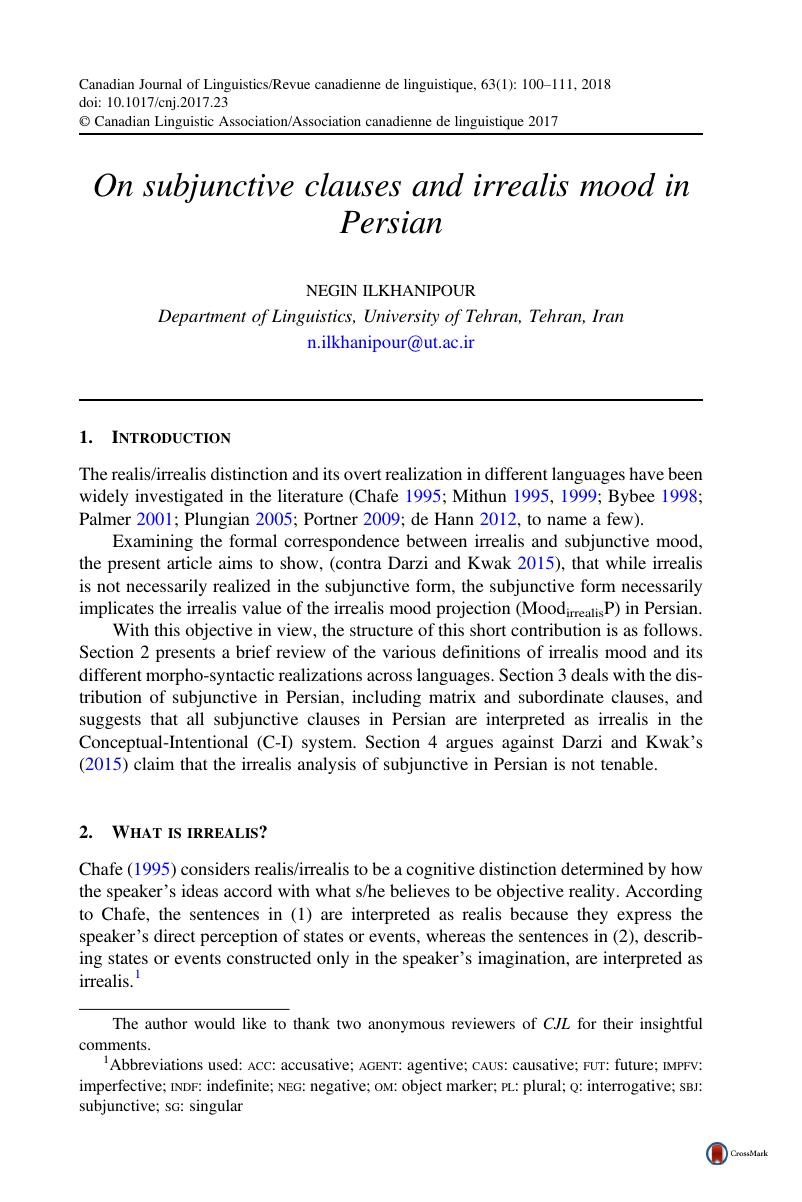Crossref Citations
This article has been cited by the following publications. This list is generated based on data provided by Crossref.
Nematollahi, Narges
2023.
Advances in Iranian Linguistics II.
Vol. 361,
Issue. ,
p.
180.

Published online by Cambridge University Press: 07 June 2017

The author would like to thank two anonymous reviewers of CJL for their insightful comments.